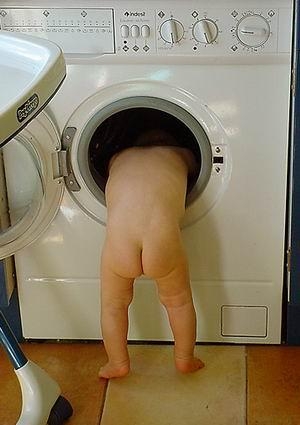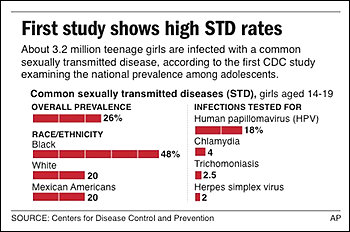Aside from the decision of when to start talking to your child about sex, parents are faced with the question of what to teach. From self-help books to religious influences, the media, and one’s moral beliefs all of these are influential factors that weigh in on when and how parents educate their children, and there are so many gradations of information to choose from. Many educational programs fall into the categories of Abstinence or Safe Sex; this post will outline the goals and effectiveness of Abstinence and Safe Sex programs.
The goal of Abstinence programs is to teach adolescents to wait until they are physically and emotionally ready before having sex. Many programs encourage no-sex-until-marriage, while others do not. Some programs discuss the effectiveness of protection without encouraging their use, while others strongly oppose condoms and contraceptives to the point of down-playing their effectiveness or ignoring their existence altogether. Many critics of abstinence-only target the teachings as “outdated” and “radically religious,” but while some programs are “overtly religious” most are secular (Kirby, 2007). Supports believe abstinence programs can achieve significant reductions sexual initiation and some research has affirmed these beliefs (Weed, 2008).
While the main goal of abstinence is to promote waiting, Safe Sex or Comprehensive approaches aim to educate adolescents on how to protect themselves from pregnancy and infections. This is accomplished while explaining the best way to prevent pregnancy, infections, and potential emotional upset is to abstain. Like abstinence programs, safe sex approaches are diverse as well. Many of the gradations arise with children’s ages, but other differences arise with different degrees of emphasis on education and the availability of contraceptives and how to use them. Critics accuse these programs of promoting adolescent sex and giving kids an excuse to have sex. Interestingly, proponents of safe sex programs can also support abstinence teaching by educating children about what to do if they have sex while still encouraging them to wait.
Promoting both abstinence and safe sex are compatible goals: Amy Schwarz argued that “We should absolutely be teaching young people about abstinence, but we shouldn’t be holding back information that can save lives and prevent pregnancy” (as cited in Schwarz, 2007, p. 155). Programs that emphasize abstinence but encourage protection in the incident of sex do not increase sexual behavior but delay sex, reduce frequency and number of partners, and/or increase use of condoms or contraceptives (Kirby, 2007). And while some may worry that the combination of these two approaches is too much information, research suggest that “earlier learning about various sexuality topics was generally not related to earlier initiation of sexual intercourse,” for both boys and girls (Sommers & Eaves, 2002).
In summary, “. . . no single, simple approach will dramatically reduce adolescent pregnancy and STD across the country” (Kirby, 2007). Unfortunately, many studies conflict supporting their bias, there is no “quick answer” for parents on how to educate their children. Instead, parents must choose from this mass of information what is best for their child and their desired teaching style; however, there is some guidance: the most effective program is “A very intensive, comprehensive, and long-term program. . .” A program like this has the most dramatic results, reducing reported pregnancy IN HALF for three years! (Kirby, 2007). All in all, there are pros and cons to each side and each family must weigh the impacts in order to find the best fit.
Remember: there is no easy route. If children ask give them an answer instead of avoiding their inquiries. If you answer you can be more confident that the education your child is receiving is the information you want them to know. Some helpful websites for safe sex and abstinence education are listed below.
References
Forrest, S. (2009, Feb. 20). Abstinence, sex education, and HIV protection. Retrieved February 21, 2009, from AVERT Web site: http://www.avert.org/abstinence.htm
Kirby, D. (2007). Abstinence, sex, and STD/HIV education programs for teens: Their impact on sexual behavior, pregnancy, and sexually transmitted diseases. Annual Review of Sex Research, 18, 143- 177.
Schwarz, A. (2007). Comprehensive sex education: Why America’s youth deserve the truth about sex. Hamline Journal of Public Law & Policy, 29 (1) , 115-160.
Somers, C. L., & Eaves, M. W. (2002). Is earlier sex education harmful? An analysis of the timing of school-based sex education and adolescent sexual behaviours. Research in Education, 67, p23-33.
Talking to your preteen about waiting. (2008, Aug. 7). 4 Parents Home. Retrieved February 21, 2009, from 4parents.gov Web site: http://www.4parents.gov
Weed, S. E., Ericksen, I. H., Lewis, A., Grant, G. E., & Wibberly, K. H. (2008). An abstinence program’s impact on cognitive mediators and sexual initiation. American Journal of Health Behavior, 32 (1), p60-73.



 Posted by parentchild
Posted by parentchild 
